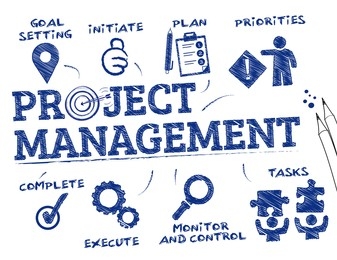The choice between traditional and modern project management methods depends on the specific needs of the project. Traditional project management emphasizes **planning and predictability** and is best suited for projects with **well-defined goals and requirements**. It follows a **sequential approach** where each phase of the project is completed before moving on to the next one. This method is **less flexible** and **more rigid** than modern project management methods.
On the other hand, modern project management methods such as **Agile** and **Adaptive** are more **flexible** and **adaptive** to changes in project requirements. They are best suited for projects with **unclear or evolving goals** and **requirements**. These methods follow an **iterative approach** where work is divided into smaller units and completed in short cycles. This allows for **frequent feedback** and **continuous improvement**.
In summary, traditional project management is ideal for projects with **well-defined goals and requirements** and a **predictable outcome**. Modern project management methods are better suited for projects with **unclear or evolving goals** and **requirements** that require **flexibility** and **adaptability**.
Traditional Methods for Project Management Methods
Traditional project management is a methodology that involves planning, executing, and controlling a set of tasks to arrive at the desired goal under budget and within a specified timeframe ¹. It is a relatively simple approach to project management that does not require the use of any fancy charts. Traditional project management is ideal for projects that have a clear sequence of events and don’t require many changes.
The traditional project management methodology follows a linear process that includes five stages: ideation, planning, execution, monitoring, and closing. Project managers decide the tools and strategies they prefer to use in these various stages.
Other project management methodologies are gaining popularity, such as Agile and Scrum, which are more flexible and iterative. However, traditional project management is still widely used in many industries and can be an effective way to manage projects that have a clear sequence of events and don’t require many changes.
What are the disadvantages of traditional project management?
Traditional project management has several disadvantages that can make it less effective than modern project management methods. Some of the disadvantages of traditional project management include:
- **Slow development**: Traditional project management follows a sequential approach, which can make it slow to adapt to changes in project requirements. If the client is not clear about the requirements, it can lead to slow development.
- **Not flexible**: Traditional project management is less flexible and cannot accommodate changes easily. It is not suitable for projects with rapidly changing requirements.
- **Not suitable for large and complex projects**: Traditional project management is linear and does not provide much space for evolution. It is unsuitable for large and complex projects as it does not allow the team to backpedal.
- **Requires a high level of discipline from team members**: Traditional project management requires a high level of discipline from team members. It is not suitable for teams that are not disciplined or lack experience.
In summary, traditional project management is less effective than modern project management methods for projects with unclear or evolving goals and requirements that require flexibility and adaptability. It is not suitable for large and complex projects and requires a high level of discipline from team members.
Modern Methods for Managing a Project
Modern project management methods such as **Agile** and **Adaptive** are more **flexible** and **adaptive** to changes in project requirements. They are best suited for projects with **unclear or evolving goals** and **requirements** that require **flexibility** and **adaptability**.
Agile is a project management principle that emphasizes **collaboration**, **speed**, **iterative** and **data-backed** approach, and **individuals over processes**. It is one of the most common project management processes and is often used in conjunction with other methodologies such as Scrum, Kanban, extreme programming, Crystal, or even Scrumban.
Adaptive project management is a method that is designed to be **flexible** and **adaptive** to changes in project requirements. It follows an **iterative approach** where work is divided into smaller units and completed in short cycles. This allows for **frequent feedback** and **continuous improvement**.
In summary, modern project management methods are better suited for projects with **unclear or evolving goals** and **requirements** that require **flexibility** and **adaptability**. Agile is one of the most common modern project management processes that emphasizes **collaboration**, **speed**, **iterative** and **data-backed** approach, and **individuals over processes**. Adaptive project management is another method that is designed to be **flexible** and **adaptive** to changes in project requirements and follows an **iterative approach**.
What are The Disadvantages of Agile Project Management?
Agile project management has several disadvantages that can make it less effective than traditional project management methods. Some of the disadvantages of Agile project management include:
- **Poor resource planning**: Agile project management is based on the idea that teams won’t know what their result will look like from day one, which makes it challenging to predict efforts like cost, time, and resources required at the beginning of a project. This challenge becomes more pronounced as projects get bigger and more complex.
- **Limited documentation**: In Agile project management, documentation happens throughout a project and is often “just in time” for building the output, not at the beginning. As a result, it becomes less detailed and often falls to the back burner.
- **Fragmented output**: Incremental delivery may help bring products to market faster, but it’s also a big disadvantage of Agile methodology. That’s because when teams work on each component in different cycles, the complete output often becomes very fragmented rather than one cohesive unit.
- **No finite end**: The fact that Agile requires minimal planning at the beginning makes it easy to get sidetracked by delivering new, unexpected functionality. Additionally, it means that projects have no finite end, as there is never a clear vision of what the “final product” looks like.
- **Difficult measurement**: Since Agile delivers in increments, tracking progress requires you to look across cycles. And the “see-as-you-go” nature means you can’t set many KPIs at the start of the project. That long game makes measuring progress difficult.
In summary, Agile project management is less effective than traditional project management methods for projects with well-defined goals and requirements. Agile project management has several disadvantages such as poor resource planning, limited documentation, fragmented output, no finite end, and difficult measurement.
Do not hesitate to ask us about traditional and modern project management methods. We may be the decisive step in your life. Contact us now, or follow up on our social media
Facebook, LinkedIn, Instagram



